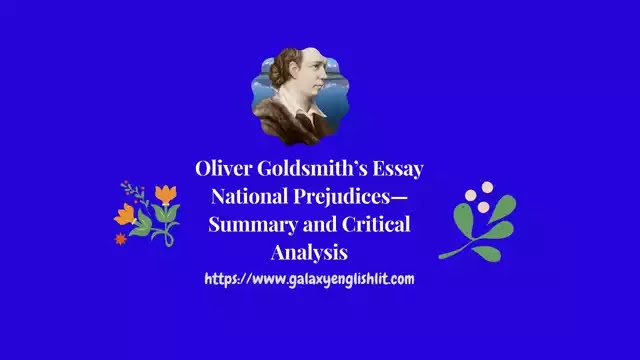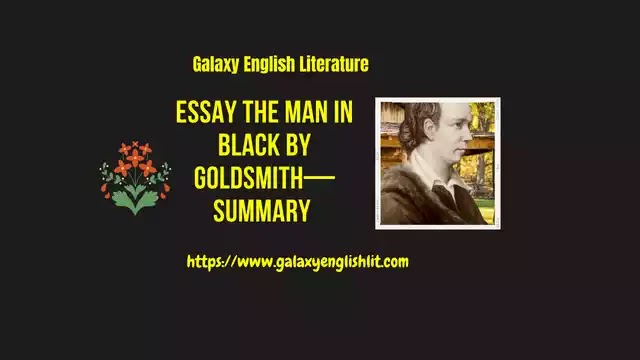Summary of the Poem:
The poem entitled The Cold Within was written in the 1960's by an American poet known as James Patrick Kinney. It appeared in countless church bulletins, websites and teaching seminars, as well as magazines and newspapers, including Dear Abby's column on September 5, 1999. According to the poet's widow, he submitted the poem first to the Saturday Evening Post, but it was rejected as too controversial for the time, Kinney sent it later to Liguorian, a Catholic magazine, which was the first commercial publication to print it.
 |
| Poem The Cold Within by James Patrick Kinney: Summary and Theme |
According to Tmothy Kinney (the poet's son), the poem was originally read at an ecumenical council meeting, after which the ministers, priests and rabbis in attendance requested copies of it. They read the poem to their congregations and before long, ‘The Cold Within’ became well known throughout the United States.
The poem is a pointed comment on lack of emotions, sympathy and warmth in human relation. In the poem, none of the six people, who by chance were entrapped together in bitter cold, agreed to fuel the dying fire by using their stick of wood which they were holding in their hands. The poem through the discriminatory acts of six humans, tries to depict attitudes of the human beings in general. Like a good parable, the poem conveys the idea that we must tolerate, if not love one another.
Just by chance, six human beings get trapped in biting cold. Indeed it was a very grave and disappointing situation for them because it was wholly desolated place and they could find no shelter to save themselves from bitter cold. They were all sitting near the fire which was about to die out. This dying fire was their only hope of survival. Each one of them was holding a stick of wood. This forms the setting of the poem and against this background, the story is narrated.
The fire which was dying needed to be fueled with logs of wood. The first man was not prepared to give up his stick of wood to keep the fire burning because he thought that if he did so, it would save the black man's life whose face he had seen in the light of the fire. The black man's face made him stern and cruel. Hence, he gave up the idea of fueling the fire with his stick. In this way he acted out of his racial prejudice.
The second man dropped the idea of adding the fuel in dying fire with his own stick because one of them he had noticed did not belong to his own religion. He did not want to save the life of that person who belonged to another religion. He suffered from intolerance.
The third man seemed to be very poor as he wrapped himself in tattered clothes. Due to suffering utter poverty, he showed great hatred against the community of the rich people, as he had noticed a rich man in his group, he held back his stick thinking that it should not be used to warm the rich man among them.
The fourth one was a rich. Thinking about the safety of the money from the lazy poor, he maintained distance from the poor man and sat aside. He wanted to keep the stick to himself for saving himself from the attack of the poor man, so he gave up the idea of adding fuel in dying fire with his own stick. He did not want to give anything to the undeserving poor. This showed his greed and stinginess.
The fifth was the black man. He was full of hatred and bitterness for the white people. His face showed how much revengeful he was. As the fire was dying, he thought he had great opportunity to hurt the white people by keeping his stick with him . He clearly suffered from the vice of spite.
The last man of the group had his own reason. He was ruled by selfishness and gave only to those who gave him in return. He thought as no one was ready to give up his stick, then why he should give away his stick. In this way, their logs held tight in their hands invited death. All of them became prey of death not because of the coldness form the outdoors but because of the coldness in their hearts.
Theme of the Poem:
The poem shows how the people are suffering from the feelings of discrimination or hatred which is based on race, class and religion. In order to highlight the feeling of prejudice or discrimination, the poet narrates the story of six men who were by chance entrapped in a bitter cold somewhere. They belonged to different backgrounds and religions. They sat around the dying fire to save their lives from the bitter cold. Because of having prejudices against one another, no one in the group was ready to put his wooden stick into the dying fire. They were so much overwhelmed with the feeling of prejudice that they had completely become indifferent towards emotions and humanity. Ultimately, the discrimination, racism and bigotry prove meaningless as none of the six people succeeds in saving his own life. Each one of them becomes an easy prey of death. Death embraces them not because of the bitter cold outside but because of the cold - heartedness within each.
In the poem, the poet shows that the discrimination based on caste, creed, class and religion is wide spread. The six men, in the poem can be seen as representatives of the whole human race. Indeed, it is the matter of sorrow that the whole human race is overtaken by the feelings of revenge, spite and anger to such an extent that eventually these prejudices lead to the downfall. The six men in the group were completely devoid of the feeling of humanity. They had no emotions for one another because they were heavily suppressed under the feeling of prejudice. This is why they could not cooperate. Though they had a log which could be used not only for saving their own life but also for others, they kept their stick to themselves because their feeling of prejudice stopped them to do so.
The poet tries to convince us in a metaphorical way that the dying fire clearly indicates the dying emotions and compassion in the hearts of people





